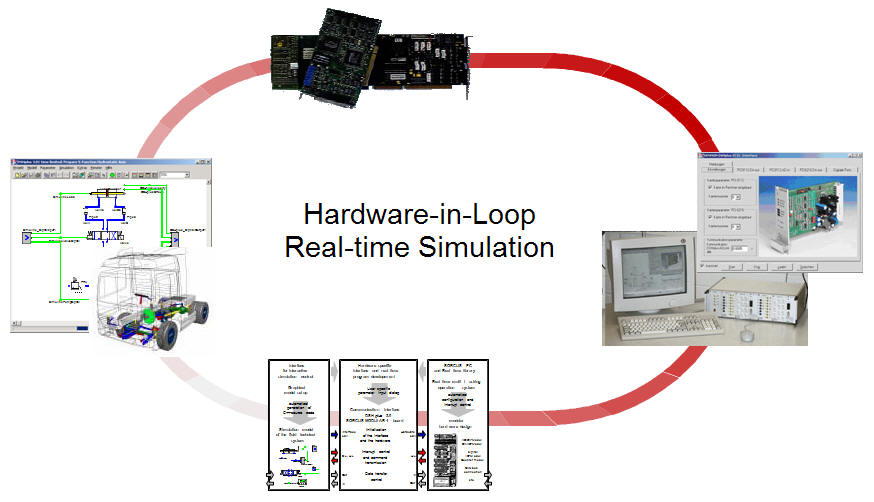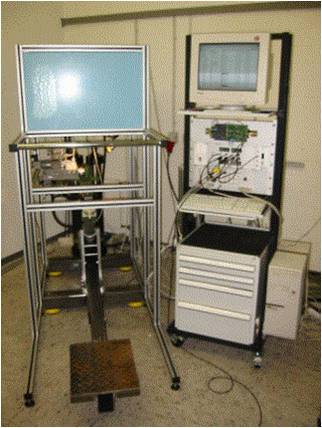Products & Solutions
HIL and Real-time Simulation
Numerical simulation of system dynamics is today a standard in the design of mechanical system. The multibody system (MBS), fluid power system and control system analysis is applied to the dynamics system as well as suspension kinematics and compliant kinematics, handling performance and ride comfort. These simulation tasks are carried out as an off-line simulation. Over the last couple of years the MBS and FPS method has been established in the real-time simulation domain, typically for the design of vehicle control systems and the test of electronic control units, using Hardware-in-the-Loop (HiL) simulation.

Dynamic system simulation focuses at the level of the entire system as it operates in its intended environment. This type of simulation allows testing of the system in its intended modes of operation as well as under dangerous emergency conditions without risking loss of life or valuable assets. Environmental conditions that may be difficult or impossible to access for system tests (such as icy roads in the middle of summer, or outer space) can be simulated using computers and appropriate software algorithms. Using simulation, intricate test sequences can be performed quickly and repeatably at relatively low cost.
 Prototype hardware and software can be tested at the
subsystem level with the use of hardware-in-the-loop (HIL) simulations long
before a full-up system prototype is available for testing. HIL simulations run
at real time speeds and perform I/O with the system or subsystem under test so
that the test item "thinks" it is operating as part of a real system in its
operational environment. These systems or subsystems can then be tested under
nominal conditions as well as at (and beyond) their intended operational
boundaries to confirm proper operation under all conditions. The ability to
thoroughly test subsystems using simulation early in the development process can
greatly reduce the debugging time and project risk compared to the alternative
approach of waiting until a prototype is completed before performing integration
and testing.
Prototype hardware and software can be tested at the
subsystem level with the use of hardware-in-the-loop (HIL) simulations long
before a full-up system prototype is available for testing. HIL simulations run
at real time speeds and perform I/O with the system or subsystem under test so
that the test item "thinks" it is operating as part of a real system in its
operational environment. These systems or subsystems can then be tested under
nominal conditions as well as at (and beyond) their intended operational
boundaries to confirm proper operation under all conditions. The ability to
thoroughly test subsystems using simulation early in the development process can
greatly reduce the debugging time and project risk compared to the alternative
approach of waiting until a prototype is completed before performing integration
and testing.

Our customers typically extend the simulation framework with
electronic and software components for two main reasons:
- Improved capabilities and the addition of
latest technologies. For example, take a standard product and add
necessary customization or an existing facility and grow it to meet future
needs.
- Improved return on investment. For example, adding hardware and software features to improve test and simulation efficiency, and thereby reducing the cost of development and test.
FlexSci is proud of our highly skilled professional team. Our team is experienced in real-time development and will be there when you need assistance.
The service areas we offer include:
- Turnkey Real-Time Simulator
- Specialty Electronic Interface Design & Manufacturing
- Real-Time Driver Development
- Legacy Simulator Migration Services
- Test Automation Services
- Testing of (new) data sets and control parameters
- ECU / TCU testing: checking functionality
- Function development: new control functions for vehicle or components (engine, transmission, aftertreatment), diagnosis
- Automated pre-calibration: HIL system allows programming of automatic procedures that can fill up e.g. engine control maps, OBD tests etc.